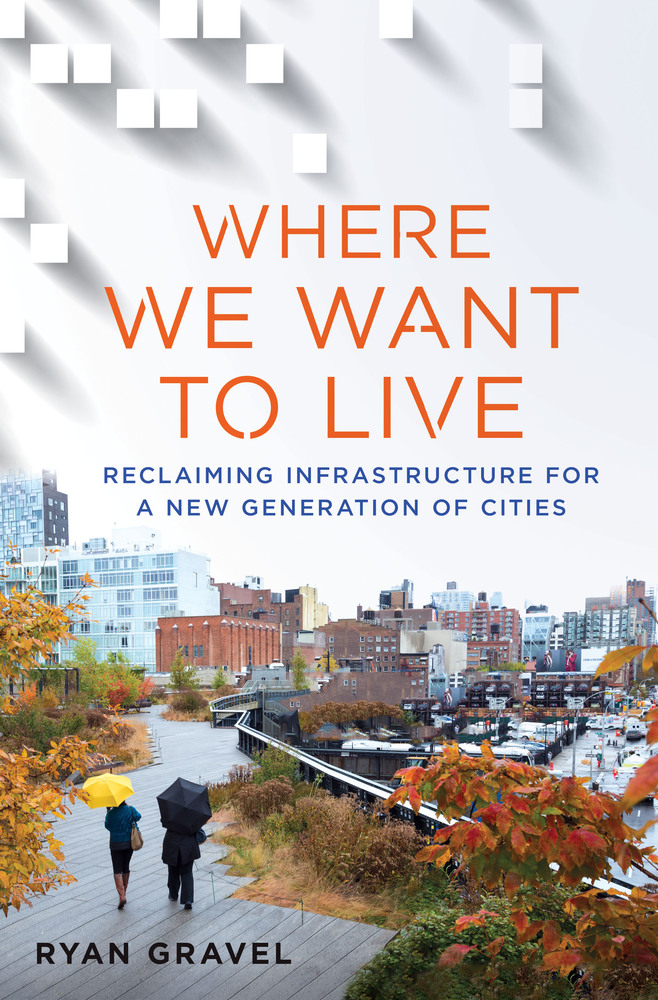Where We Want to Live: Reclaiming Infrastructure for a New Generation of Cities, by Ryan Gravel (St. Martin’s, 2016).
About the reviewer: Mark Pendergrast is an Atlanta native who is writing a book about Atlanta with a focus on the BeltLine and its adjacent neighborhoods. It should be published by Basic Books in the spring of 2017. You may reach him through his website, www.markpendergrast.com.
Ryan Gravel is one of the few living American architects/city planners who can legitimately be called a visionary. His 1999 master’s thesis at Georgia Tech envisioned a streetcar loop inside the Atlanta city limits, to connect four separate railroad lines, mostly termed “belt lines” when they were built in the late 19th and early 20th centuries, because they formed a kind of belt around the central city. They lay only two or three miles in radius from the city center, and aside from one section in the northwestern part of the city, they were mostly abandoned. In fact, most parts were covered with kudzu vines and homeless encampments. By reviving these forgotten, neglected corridors, Gravel wrote in his thesis that “the Belt Line should accomplish more than just an improved system of public transportation. It has the potential to change the way we look at Atlanta.” Instead of dividing neighborhoods, the old railroad tracks could reconnect “home and destination, rich and poor, black and white.” Perhaps the city’s problems could lead to its salvation. “Troubled by pollution and congestion, Atlanta can seize this chance to redefine itself,” he wrote in his thesis.
Gravel never expected his thesis to become reality, but that’s exactly what is happening, and his original vision has expanded to include a walking-hiking trail and new parks. In this book, Where We Want to Live, Gravel briefly summarizes how the BeltLine (as it is now spelled) project came into being, initially through grassroots efforts that he helped to lead. But the main point of his book is a big-picture exploration of how re-inventing old infrastructure can help to remake our cities into places where, as the title says, we actually want to live – in a greener, more walkable, more intelligently developed way, with denser residential patterns, mixed-use developments, fewer automobiles, and more walking and biking.
In this book, Gravel, who now travels the world to advise other cities, discusses not only the Atlanta BeltLine, but many other “catalytic infrastructure” projects, among them New York’s High Line and prospective East River Blueway, Miami’s Underline, Philadelphia’s Rail Park, Detroit’s Dequindre Cut Greenway, the Los Angeles River restoration, the Iron Horse Trestle in St. Louis, the Harismus Stem Embankment in Jersey City, the Midtown Greenway in Minneapolis, Lafitte Greenway in New Orleans, Buffalo Bayou Park in Houston, S-Line in Salt Lake City, Singapore’s Rail Corridor, Vancouver’s Arbutus Corridor, Buffalo’s Belt Line, Paris’s Promenade Plantee and Petite Ceinture. All of these projects are reinventing old infrastructure (mostly abandoned rails).
I do have a few quibbles with the book. Gravel provocatively entitles one chapter, “There’s Nothing Wrong With Sprawl,” then proceeds to tell us everything that is wrong with sprawl. Also, he does not go into any detail on all of the challenges that the BeltLine faced in coming as far as it has. There have been enormous problems, involving legal challenges that led to a state constitutional amendment, a last-ditch effort by Amtrak to take the northeastern section, the Great Recession demolishing income estimates for the BeltLine tax allocation district, an unworkable contract with the Atlanta Public Schools, and more, so that it’s quite miraculous that the project is still coming along. And it is unlikely that the entire project will be finished by the 2030 target date. In fact, it isn’t even clear if streetcars will make it onto the corridor along with the walking/biking trail (though a new city tax to support MARTA, Atlanta’s rapid transit, may provide hope). These are issues Gravel does not cover in this book. (I should reveal that I am working on a book about Atlanta, my birthplace, which will be a good complement to Gravel’s. I am focusing on the BeltLine project in much greater detail. Gravel is one of the major characters in my forthcoming book.)
But these are really minor cavils. What Gravel has done here is to offer a clarion call, a sermon if you will, to support these innovative urban projects. In his final chapter, he exhorts readers: “By experimenting with new ideas, cultivating a political structure for change, stopping sprawl, and shifting to more sustainable growth strategies, we can generate significant and positive change…. Whatever road we take to get there, we will have to build broad support around an aspirational view of our future. This will require us to dream, think, and plan, but we will also need to take action….”
Ryan Gravel’s book should be required reading for city planners and those who care about our future.

The question is whether building the streetcar is actually a worthwhile goal. Given how few people ride Atlanta’s current streetcar, and how the proposed streetcar avoids all of Atlanta’s existing destinations and job centers, and how the argument for the streetcar centers on meaningless buzzwords like “change the way we look at Atlanta” – I’m not optimistic.